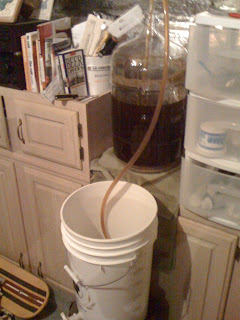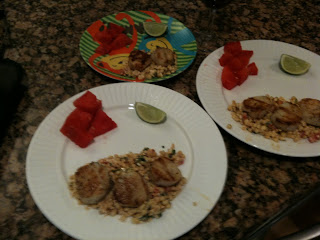
Beer marketing has certainly changed since the days of the classic “Great Taste, Less Filling” slogan which initially featured big brawny men like Bubba Smith and funny man Bob Uecker and eventually ended with the controversial skit of women wrestling in a fountain. It now seems that more and more macro brew commercials are trying to take a page from craft beer’s playbook and focus on the beer or brewing process itself. Of course, everything they’re saying is total B.S. and full of meaningless marketing jargon. But hey, at least they’re talking about hops now! Grab a beer with me as I wade through the crap and dissect a few of these old "go to" beers that I used to drink in high school...err..college, dad.
The Gimmick: “Triple Hops Brewed Miller Lite”
The Claim: Their website claims, “Ever wonder how we make Miller Lite taste so insanely great? Uhhh..not really...Triple Hops brewing! Great Pilsner taste comes from our three-step brewing process:
1.Create Flavor
2.Develop Balance
3.Lock-in Taste
Why it’s B.S.: Oh, plenty of reasons. Let’s start with the obvious and move to the obscure. It seems that they’re touting three hop additions in the brewing process. Nearly every beer you’ve ever tasted has at least three hop additions. It’s how beer is made. The first addition, at the beginning of the boil, makes the beer bitter to offset the sweetness of the malt. The second addition, sometime in the 2nd half of the boil, is primarily for hop flavor. The third addition, at the very end of the boil, is primarily for hop aroma. It’s not all that complicated, and I think that Miller Lite’s "brewmaster" could understand it easily enough. Of course, Miller Lite has no hop flavor or aroma, so they have to use meaningless marketing jargon like “Lock-in taste.” WTF? Lock it in!! Plus, they don’t even mention what kind of hops or how much they add. Back in 1982 when Miller Lite first hit the market, they released the ingredient list, which was filled with all sorts of nasty stuff you don’t want in a beer, but relevant to this discussion is the fact that they used chemically modified hop extract instead of actual hops. They claim that now they’re “all natural,” but who knows, maybe triple hopped means three actual hops. Certainly tastes that way..
The Gimmick: Miller Lite Vortex Bottle

The Claim: The grooves in the bottle’s neck unlock that TRIPLE HOPS BREWED great Pilsner taste!
Why it’s B.S.: Like the Triple Hops Brewed gimmick, Miller Lite doesn’t really say exactly what the “vortex” created by the grooves is supposed to do. Is it supposed to release aromatics, like agitating a tulip glass? Miller Lite doesn’t have any aromatics, it's macro swill and it tastes exactly the same, no matter what time of the year or where you drink it. Ahhh..consistency, what I expect from factory food or drink! And even if it did have the slightest aroma, you’re usually drinking it straight out of the bottle, and right past your nose, do not pass go, do not collect $200. Basically, for the last few years industrial brewers have been trying to have us believe that we should buy their cheap beers because they’ve been making technological advancements in their bottles and cans?? That is just the stupidest thing ever. First there was the wide mouth can. That was actually sort of okay, believe me, you want to drink this stuff as fast as possible. Then it got absurd, enter the “vortex bottle”. Ok, they made bottles (some plastic) with spiraling grooves in the neck to enhance the way the beer is poured out of the bottle. Really? if there's one thing I can honestly say I NEVER had a problem getting out of the bottle, it's beer. Maybe I’d be into that idea for ketchup, or one of the other condiments that I wind up scraping out of the bottom of the jar with a butter knife, but never beer.
Absurd bottle, meet absurd commercial.
Clubber guy in sunglasses: I don’t see what’s so great about this bottle.
Half-naked waitress: It’s got grooves. Maybe if you take off your sunglasses, you’d see that.
Notice that, again, the waitress doesn’t explain what the grooves are supposed to do. I like to think that Clubber Guy in Sunglasses is actually a beer geek, dragged to a shitty club with his friends, and was actually asking what the grooves do expecting a coherent answer. Receiving nothing but idiocy and insults to his masculinity, he withdraws into the sounds of Corey Hart..IIIIII WEAR MY SUNGLASSES AT NIGHT SOOO IIII CANNN SOOO I CANNNSEE...probably to distract anyone from the real so-called purpose of the commercial, the vortex bottle.
The Gimmick: Frost Brewed Coors Light!

The Claim: It’s frost brewed so it’s as cold as the Rockies!
Why it’s B.S.: “Hmm. Well, we can’t think of a single good thing to say about our beer’s taste or aroma.....soooo...ummmm... Wait! I know! It’s cold! ” Coors Light’s entire marketing campaign is based on the fact that their beer is colder than everybody elses. Their cans have the mountains that turn blue so you can see when the beer is cold! And while I'm no self-proclaimed expert on cold, when deciding which sense to use to determine if something’s cold, touch has a pretty darn good track record. Moving right along, what exactly does “frost brewed” mean, anyway? Their water starts out colder than everyone else because it's in the Rockies? Well that doesn’t really matter since you have to eventually boil the water to make most of beer anyway. So just being technical, maybe frost brewed means it’s in near-freezing temperatures when it’s fermenting? But, frost-fermented just doesn't sound as good? Well if that’s what they're getting at, it's just lagering then, nothing special- that’s just how that particular style of beer is made by anyone who lagers beer. Finally, one of your first beer geek lessons in life is that you don’t want your beer to be too cold anyway. Especially with stronger and darker styles, more flavors come out as the beer warms. On top of that, cold beer numbs your taste buds. Wait, I might be on to something..nahh..I’ll give Coors the benefit of the doubt and believe that’s not what they’re striving for here.

The Gimmick: Beechwood-aged Budweiser!
The Claim: Budweiser’s award-winning flavor is attributed to the beechwood aging process!

Why it’s B.S.: Okay, while I'll admit Budweiser is not as quite as guilty here as the light beers above, they're still taking a page from the craft beer movement. If you dig around their website a little, they actually explain what they do with beechwood; and it’s not aging at all, it's simply that they boil beechwood chips to remove any traces of wood flavor, then put them in the fermenter to speed up the process a bit. Gives the yeast more surface area to work with. It’s a mighty fine process that I've actually seen first hand at Busch Gardens, but Budweiser’s being a bit crafty (hehe)here. Now that craft beer is headlining the beer market concert, our buds at BUD suddenly break out their old “beechwood aged” advertisements which were retired for quite a few years after BUD completely redesigned their marketing strategy. This term immediately evokes images of beer aging for months in WOOD barrels to anyone remotely familiar with aging ales in cask, which of course, is gaining a huge following in the craft beer community. GENIUS! Oh, wait, that's a Guiness ad and a story for another time.












































